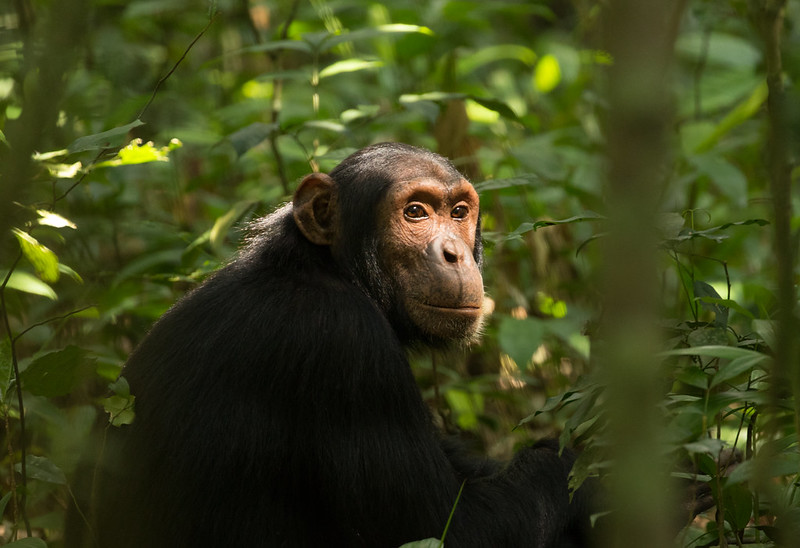Kibale Forest National Park: (Budget) Chimpanzee Trekking in kibale national park
kibale national park location, kibale national park is located in the Western Part of Uganda & offers budget Chimpanzee Tracking Tours. Kibale Forest National Park is your ideal safari destination in Uganda if you are looking to trek and watch the chimpanzees.

Kibale Forest National Park is a national park in South Uganda protecting moist evergreen rain forest. It is 766 km2 in size and is located between 1100 and 1600 meters in elevation. Despite encompassing primarily moist evergreen forests, it contains a diverse array of landscapes.
Kibale is one of the last remaining expanses to contain both lowland and montane forests. In East Africa, it sustains the last significant expanse of pre-montane forest. The park was gazetted in 1932 and formally established in 1993 to protect a large area of forest previously managed as a logged Forest Reserve.
The park forms a continuous forest with Queen Elizabeth National Park. This adjoining of the parks creates a 180 km (111 mi.) wildlife corridor.
It is an important eco-tourism and safari destination, popular for its population of habituated chimpanzees and 12 other species of primates. It is also the location of the Makerere University Biological Field Station (MUBFS).
Remarkable Tours to Do in Rwanda
1 Day Budget Rwanda Gorilla Trek
2 Days Cheap Rwanda Gorilla Trek
3 Days Budget Wildlife Tour Akagera
3 Days Cheap Gorilla Trekking Tour
4 Days Rwanda Double Gorilla Tour
5 Days Gorillas and Batwa Cultural Tour
6 Days Uganda Rwanda Gorilla Safari
7 Days Gorillas and Wildlife Tour
7 Days Uganda Rwanda Gorilla Safari
8 Days Rwanda Uganda Gorilla Tour
Explore kibale forest national park
Much of the forest was logged during its time as a Forest Reserve, and some exotic species of trees were planted in plantations (pines and eucalyptus). Since the national park was gazetted, many of these introduced trees have been removed and logging has ended.
Fauna
There are 13 species of primates in Kibale National Park. The park protects several well-studied habituated communities of Common Chimpanzee, as well as several species of Central African monkey including the Uganda Mangabey (Lophocebus ugandae), the Ugandan Red Columbus (Procolobus tephrosceles) and the L’Hoest’s Monkey. Other primates that are found in the park include the black (Columbus satanas) Columbus and the blue monkey (Cercopithecus mitis).
The park’s population of elephants travels between the park and Queen Elizabeth National Park. Other terrestrial mammals that are found within Kibale National Park include red and blue duikers, bush pigs, warthogs and buffalo.
The carnivores that are present include leopards, bush pigs, three species of duiker and two species of otter. In addition, lions visit the park on occasion.
Habituated Chimpanzee in Kibale National Park
Bird life is also prolific. The park boasts 325 sited species of birds, including the olive long-tailed cuckoo, Western Green tinker bird, two species of pitas (African and Green-breasted) and the African Grey Parrot. The ground thrush (Turdus kibalensis) is endemic to Kibale National Park.

